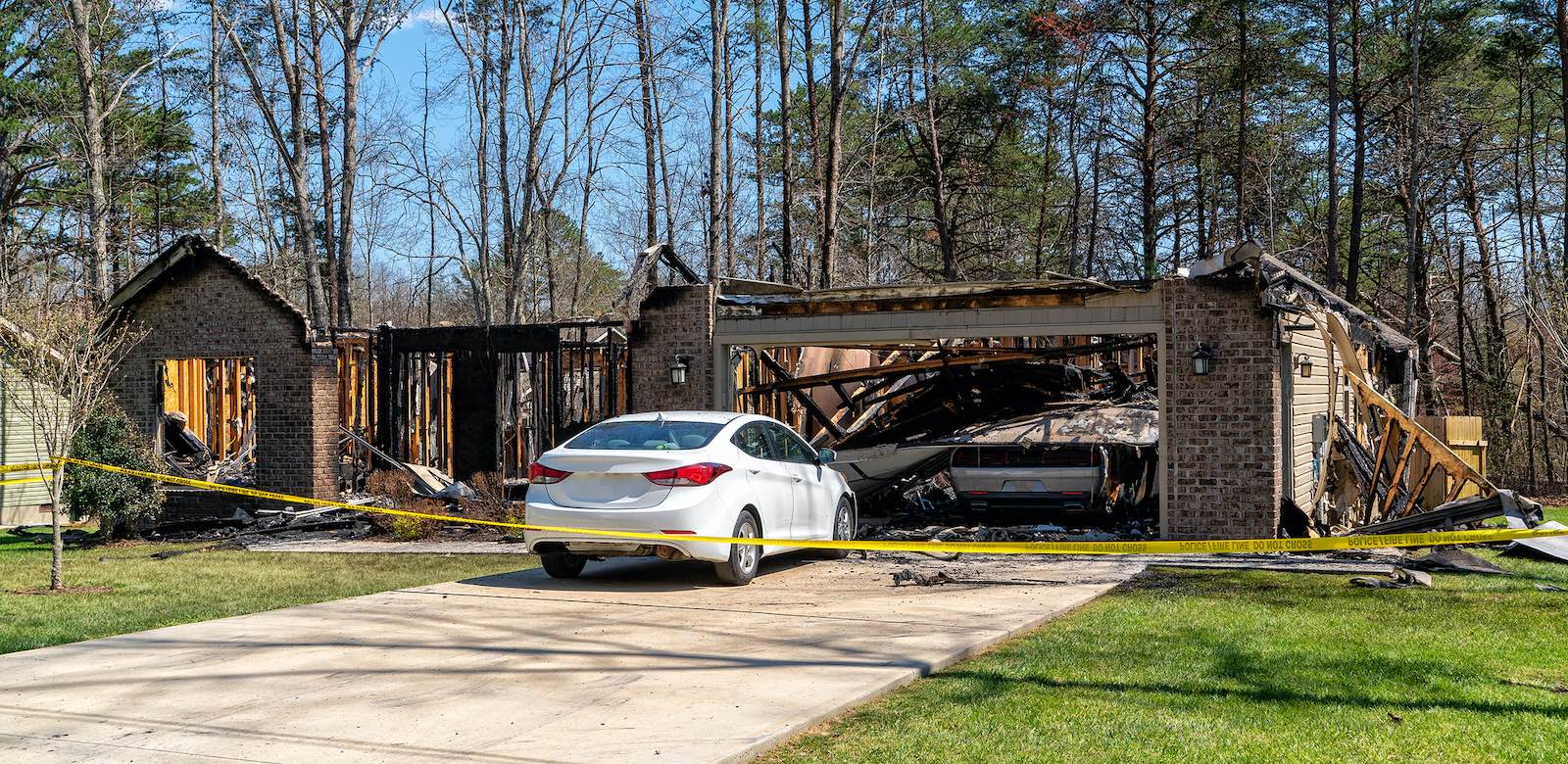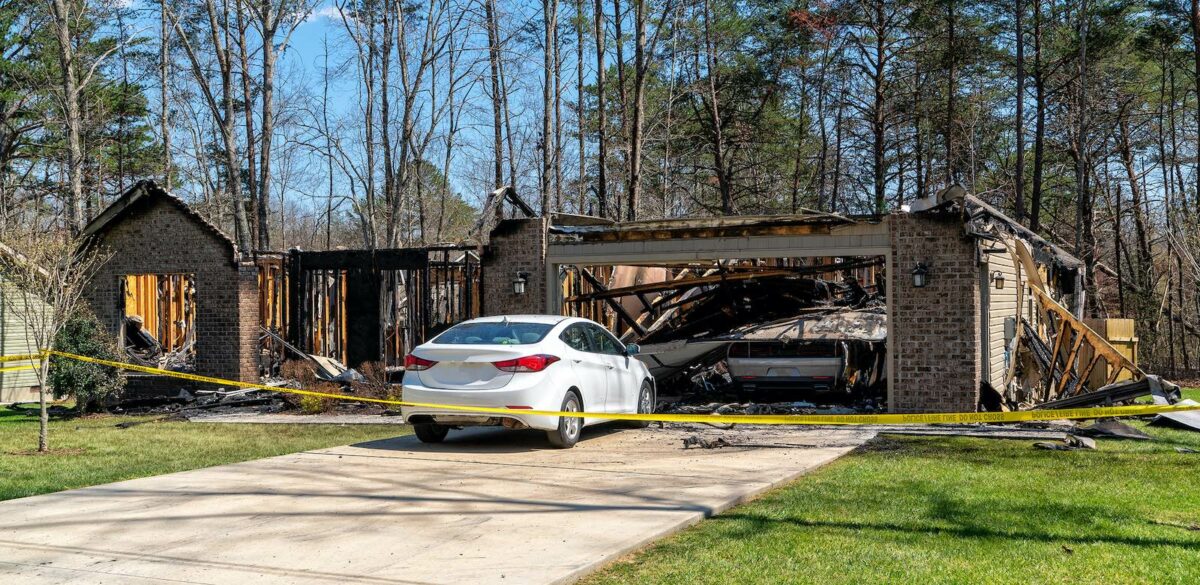
In 2021, there were a staggering 2,948 wildfires across the state of California. These fires raged across a total of 18,030 acres of land. To date, in 2022, there have already been 2,504 wildfires, and we’re only halfway through the year.
These wildfires are caused by rising temperatures, ongoing drought, and dry vegetation. A careless campfire or flicked cigarette butt can create an inferno that destroys huge swathes of land and takes weeks to extinguish. Sadly, in 2021, around 3,500 people lost their homes to wildfires.
Rebuilding in the wake of a fire is hard. Individuals are torn by the desire to stay in the area they call home and the ever-lurking danger of more fires. Deciding what is best can be emotionally draining. However, despite the risks, many people rebuild in the exact spot where their homes burned down.
Rebuilding successfully is about hardening the structure against fire. When done well, it can buy you and your family enough time to get out of there and can even leave the structure standing. Here’s how…
Build a Protective Roof
Wooden and shingle roofs are the worst at protecting you from fire. Metal, clay, and tile have excellent fire repellent properties, however, so rebuild using these materials.
- Keep the roof clear of vegetation and debris. Regularly inspect it.
- Block spaces between decking and covering to stop sparks and embers from entering and catching alight.
- Install a metal drip edge and drain pipe. Ensure it’s corrosion-resistant and non-combustible.
- Use a non-combustible cover over your rain gutter to prevent the build-up of debris.
- Any eaves should be boxed in.
Fireproof Your Windows
On a sunny day, you can put your hand on the glass of a window and feel how hot it is. Glass heats up fast, so if there’s a wildfire nearby, the glass will often shatter before the fire reaches the home. A broken window makes the property more vulnerable, leaving it wide open for embers and flames to enter freely.
- Dual paned windows are stronger and more durable against fires.
- Choose smaller-sized windows, especially if they’re facing vegetation or forested areas.
- One pane of each window should be tempered glass which protects against breakage.
- Have screens installed to add an extra layer of ember resistance and to protect against heat.
Cover Your Vents
Vents are there for air circulation; however, they are a vulnerable spot when it comes to fires. Because they are an open way into the home, the smallest embers can blow through the vents and catch alight in the house.
- Install flame-resistant WUI (Wildland Urban Interface) vents.
- Use 1/16 or 1/8 inch mesh to cover the vents. Ensure the material you choose is metal as other materials such as plastic or fiberglass will melt in the heat.
Choose Fire Retardant Walls
American houses use a lot of wood in their construction. While it’s an extremely hardy and versatile building material, wood is terrible at fire resistance. When rebuilding your home, opt for materials that will not easily burn, especially if you live within 30 feet of a neighbor.
- Stucco and fiber cement are ideal fire retardant building materials. Your contractor will be able to recommend other approved fire-resistant building materials.
- Wood can be used as long as it has been specially treated for fire resistance.
- Extend the use of these materials from the foundation right through to the roof.
Protect Your Chimney
Chimney and stove outlets are other vulnerable entryways into the home. Thankfully, you can do a number of things to protect them.
- Cover your stovepipe or fireplace outlet with a metal mesh grill. The mesh holes must be no bigger than ½ inch.
- If you’re not using the fireplace during wildfire season, make sure the flue is closed.
Prep Your Garage
We tend to store a lot of stuff in our garages, so they can become a danger if a wildfire is present. When planning out your garage, incorporate fire safety into the design.
- Install weather stripping around the garage door. This prevents embers and sparks from flying in.
- Store combustible liquids and materials away from the garage door and away from any ignition sources.
- Install a backup battery to the door opening mechanism so if you experience a power outage, you will still be able to open the door, or be sure to practice manually releasing and opening the garage door.
- Have a fire extinguisher, bucket, shovel, and rake in easy reach to help stave off any fires.
Clear the Outdoor Areas
Since a wildfire will first arrive at your yard, it is your first line of defense. This is called “defensible space.”
- Keep the area around your home free from dry vegetation.
- Cut back or remove any trees with branches that hang near the home.
- Look up your local codes on what you need to do to allow emergency vehicles to enter your home. This often involves having gates that are wide and open inwards, a driveway free of low-hanging vegetation, and for the access road to be a minimum of 10 feet wide.
- Build any decking around the house in fire-resistant, non-combustible materials.
Rebuilding in the aftermath of a wildfire is possible as long as you do it with the mind that you may experience another fire in the future. Fire-proofing your home will stop those tiny embers from straying inside and causing internal fires, so you’re more likely to escape unscathed. However, it has to be said, fire-proofing won’t protect you 100%. That depends on the severity of the fire. But these tips can buy you valuable time so emergency services can arrive and deal with the fire.
As wildfires are set to worsen, if you’re in a wildfire zone, you may also want to start retrofitting your existing home to be as fire-proof as possible. This way, if a wildfire arrives in the area, you can be confident you’ve protected yourself as much as possible.

